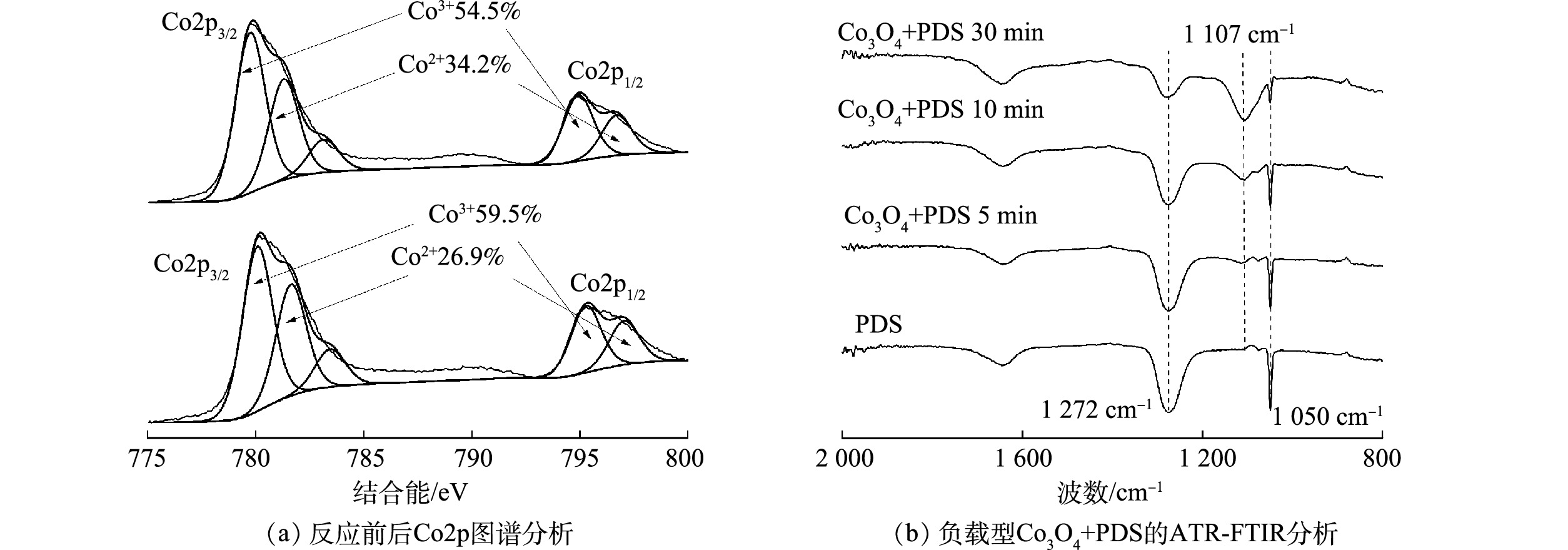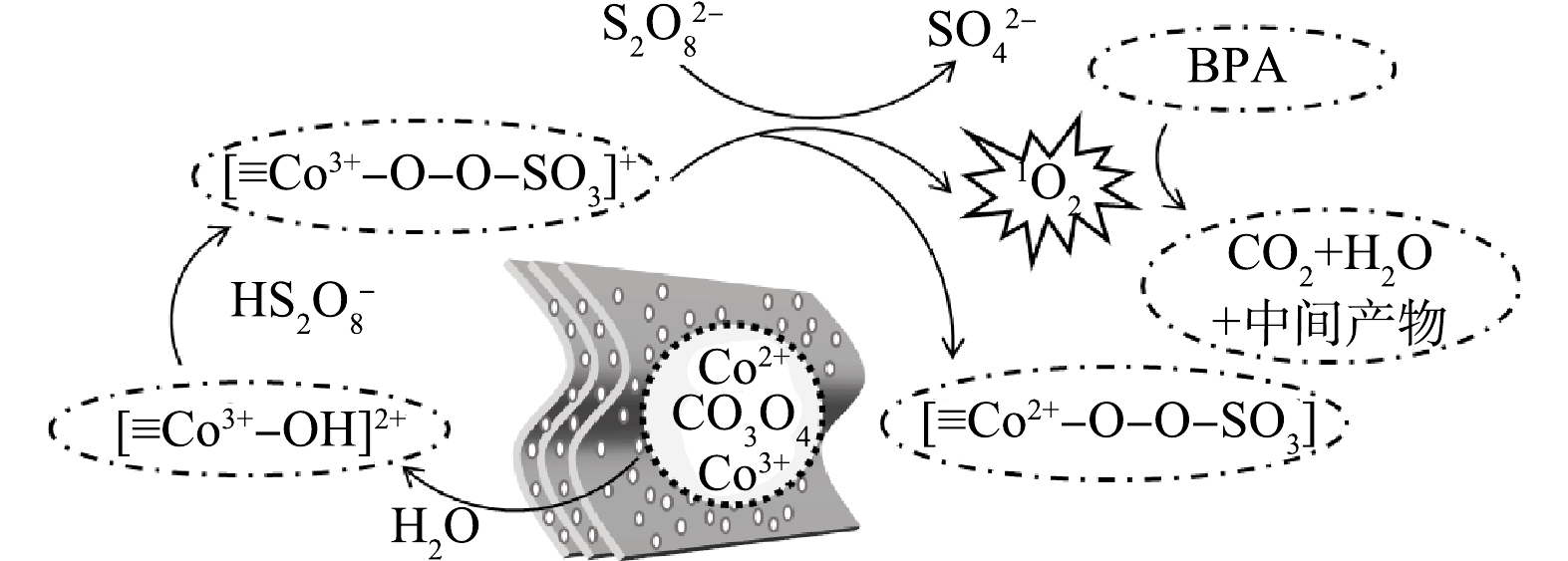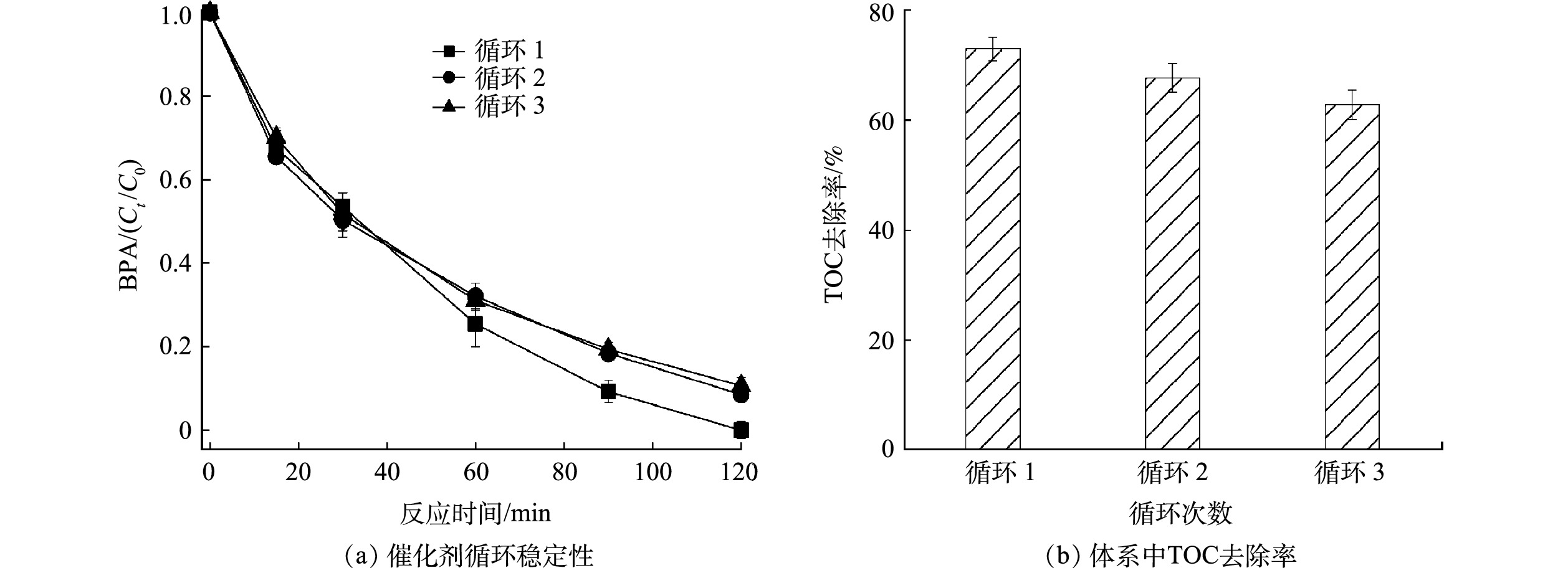-
传统脱氮除磷工艺受其自身限制及城市污水C/N低的特点,面临着脱氮除磷和节能降耗困难的两大难题[1]。其根本原因在于脱氮功能菌和除磷功能菌对碳源的竞争及污泥管理的矛盾[2]。因此,亟需从脱氮除磷功能菌群等微生物管理入手,解决碳源竞争和运行能耗高等问题,实现污水处理节能减排,创造更大的社会效益和经济效益,助力实现“双碳”目标。
短程硝化/厌氧氨氧化 (partial nitrification/anammox,PN/A) 工艺是具有应用前景的节能节碳自养脱氮工艺,相对于传统的硝化反硝化脱氮工艺,可节约100%碳源消耗量、60%能耗,减少80%污泥产量[3-4]。其成功运行的关键在于保障稳定的短程硝化过程,从而实现稳定的NO2−来源。目前,anammox工艺已广泛应用于剩余污泥厌氧消化液等高氨氮浓度污水脱氮处理[5-6]。2010年以来,国内外学者致力于主流anammox工艺的研究及应用[7-8]。但由于城市污水有机物浓度较高、氨氮较低、水温较低,anammox的主流应用面临巨大挑战,极大限制了主流anammox工艺广泛应用。强化生物除磷 (enhanced biological phosphorus removal,EBPR) 是应用最广泛、最经济的除磷工艺[9-10]。PN/A自养脱氮和EBPR生物除磷过程的耦合可使污水中的碳源全部流向除磷过程,避免脱氮除磷功能菌因碳源不足产生竞争,同时降低污水处理所需的能耗,以节省能耗、同步脱氮除磷、提高去除效率、减少污泥产量,为城市污水主流anammox组合除磷工艺的推广应用提供新思路[11]。
YANG等[12]分别在2个序批式反应器 (sequencing batch reactor, SBR) 中运行EBPR和PN/A工艺。YUAN等[11, 13-14]将EBPR和PN过程耦合于SBR 1反应器中,SBR 1出水随即进入SBR 2反应器进行anammox脱氮反应。由于难以控制进行anammox反应的氨氮和亚硝氮比例,该工艺在实际应用中受到限制。亦有研究者利用反硝化除磷菌将硝氮还原为亚硝氮的过程,提出反硝化除磷耦合anammox工艺,利用反硝化除磷反应实现亚硝氮的积累,为后续的anammox过程提供基质[15-17]。然而分体式整体工艺结构和操作复杂,难以有效推广应用。HUANG等[18]在一体式生物膜反应器内将EBPR和PN/A工艺耦合处理养猪废水厌氧消化上清液,在30 ℃高温条件下,利用聚磷菌将外源有机物转化为内源有机物 (polyhydroxyalkanoate, PHA) ,强化碳源利用的有效性,利用高浓度氨氮形成的FA抑制NOB,为anammox菌提供基质,保证anammox菌的活性,从而达到提高同步脱氮除磷效率的目的。
然而,一体式反应器在低氨氮浓度、低温的城市污水脱氮除磷中的应用仍需进一步探索。为此,本研究利用SBR反应器,将PN/A与EBPR工艺相结合,处理实际低C/N污水,考察其运行效果、功能菌活性变化和相对丰度变化等,为低C/N城市污水的高效、低耗、可持续、稳定脱氮除磷工艺的开发和调控提供新的方法和思路,以期为脱氮除磷技术的工程应用提供参考。
-
1) 反应器简介。反应器有效体积为56 L,下部设计为椎体以利于污泥的沉淀 (图1) 。反应器安装于某污水厂,可直接利用经初沉池的初沉污水。反应器内安装了在线探头,包括用于检测pH和氨氮 (ammo::lyserTM) 、DO (oxi::lyserTM) 和ORP的探头 (s::can,Vienna,Austria) 。系统采用PLC控制,运用软件包含Ignition SCADA、Inductive Automation (Fulsom,CA,美国) 及 TwinCAT PLC 软件 (Beckhoff,Verl,德国) 。温度控制约为19.8 ℃。不控制pH,反应期间pH为7.0~7.8。反应器出水存于56 L的储水池中,该储水池用于混合几个周期的出水。
2) 反应器运行方式。a) 进水段由蠕动泵控制,持续约12 min。b) 厌氧段约45 min,此阶段中搅拌器开启。c) 好氧段采用间歇曝气方式,先曝气5 min,并由PID控制DO小于1 mg·L−1;在停止曝气后,DO开始下降,当DO降至0.05 mg·L−1时,开始持续6 min的缺氧段;当缺氧段结束后,再次开启曝气段,如此循环,其中气体流量由流量计控制,约15 L·min−1;当[NH4+-N]低于1 mg·L−1时,好氧段终止并进入下一阶段,好氧段总体时长控制为60~600 min。d) 缺氧搅拌阶段约30 min,此阶段搅拌器开启。e) 排泥阶段为排除适量剩余污泥,由PLC控制排泥泵开启时间。f) 沉淀阶段时长约30~40 min,此阶段停止曝气和搅拌。g) 排水阶段时长约10 min,排水体积为35 L,即反应器的体积交换比为62.5%。
3) 污泥的制备。反应器中悬浮污泥接种于同厂某强化生物除磷中试反应器,加入填料前已稳定运行约500 d,通过控制间歇曝气和污泥龄实现了稳定的亚硝氮积累,亚硝氮积累率为70%[19]。厌氧氨氧化填料接种于某侧流反应器中,并在某主流反应器中运行了3年,随后接种至本反应器中。填料总体积为4 L,占本反应器体积约7%。
-
工艺进水来自某初沉池。反应器运行期间为7月至次年2月。由于7月至9月为雨季,进水污染物的质量浓度较低。进水中TCOD为(88.7±27.3) mg·L−1,[NH4+-N]为 (15.2±4.3) mg·L−1,[NO2− -N]为 (0.3±0.3) mg·L−1,[NO3− -N] 为(0.2±0.5) mg·L−1,总无机氮 (TIN) 为(15.5±4.3) mg·L−1,溶解态磷 (DP) 为(1.6±0.6)mg·L−1。
-
1) 悬浮污泥的AOB/NOB活性实验。在SBR的一个周期快结束时,即[NH4+-N]约为1 mg·L−1时,取300 mL混合均匀的悬浮污泥于锥形瓶中,置于摇床上,转速为120~140 r·min−1,以保证悬浮污泥能均匀混合,同时曝气使DO大于3 mg·L−1。投加约15 mg·L−1氨氮和15 mg·L−1亚硝氮后约5 min开始取样,之后每隔20 min取样,共取5个样品。期间持续监测pH和DO,使pH维持在7~8,DO > 3 mg·L −1。温度保持在约20 ℃。样品经0.45 μm一次性滤膜过滤后,保存于4 ℃的冰箱中,24 h内化验三氮指标。当实验结束后,测定污泥的质量浓度,并根据以上数据计算AOB和NOB活性。为保证准确性,每次实验重复2次[19]。AOB和NOB活性计算方法参考式 (1)~(2) 。
式中:
d[NH+4-N]dt 表示氨氮的降解速率,mg·(h·L)−1;X为污泥质量浓度,mg·L−1;d[NO−3-N]dt 表示硝氮的生成速率,mg·(h·L)−1。2) 填料的AOB/NOB活性测定。在周期结束时随机取37颗填料,放入锥形瓶中,加入过滤后的出水至300 mL,分别投加15 mg·L−1的氨氮和亚硝氮,放入摇床上混合均匀,5 min后开始取样。每隔20 min取1个样品,共取5个样品。样品经0.45 μm的滤膜过滤后保存于4 ℃的冰箱内,24 h内检测三氮指标。在实验结束后,随即选取4个填料,将填料生物膜刮下来测定其质量,换算为生物膜的质量。计算方法与悬浮污泥方法一致。
3) 厌氧氨氧化活性。由于厌氧氨氧化活性的测定对环境要求较高,故采用反应器内原位测定方法,即在一个反应周期将要结束,即[NH4+-N]约为1 mg·L−1时,关闭曝气仅开搅拌,当DO< 0.01 mg·L−1时,在反应器内投加氨氮和亚硝氮储备液,使初始[NH4+-N]和[NO2−-N]约15 mg·L−1,每隔30 min取样,共取5个样品。样品经0.45 μm的滤膜过滤后保存于4 ℃冰箱内,并于24 h内检测三氮指标。根据[NH4+-N]、[NO2−-N]和[NO3−-N]变化,计算各自消减或增长比值。由于悬浮污泥中存在一定反硝化作用,最终以[NH4+-N]变化作为厌氧氨氧化活性。计算方法参考式 (3) 。
式中:XB为生物膜的质量浓度,mg·L−1。
-
为更好地了解周期内污染物浓度变化规律,在反应周期内进行取样以分析各污染物质量浓度,每隔15~30 min取样,样品经0.45 μm的滤膜过滤后保存于4 ℃冰箱内,并于24 h内检测三氮指标和DP。为了解好氧段间歇曝气过程中氮质量浓度的变化,取间歇曝气好氧和缺氧前后样品,经0.45 μm的滤膜过滤后保存于4 ℃冰箱内,并于24 h内检测三氮指标。
-
为了解反应器运行过程中微生物群落结构,尤其是脱氮的功能菌和除磷菌群的变化,分别选取侧流接种时期的填料 (侧流条件) 、主流运行3年后的填料 (主流条件) 及投入该反应器后运行3个月的填料 (本反应器) 及反应器运行3个月前后悬浮污泥 (SSA和SSB) 进行16S rRNA高通量测序。将填料保存于-80 ℃冰箱中,用于后续DNA提取等工作。主要采用HiSeq Illumina 高通量测序法,包括DNA提取、设计合成引物接头、PCR扩增和产物纯化、PCR产物定量和均一化、HiSeq文库制备、MiSeq高通量测序及数据分析 (Illumina, San Diego, CA, USA) 。引物采用V4-V5区的515F-Y/926R。
-
反应器内污泥龄计算采用Dynamic SRT,其计算公式如 (4) [20],好氧SRT好氧计算式为 (5) ,亚硝氮积累率NAR计算方法如公式 (6) 所示。
式中:X出水是SBR反应器每个循环结束时出水的悬浮污泥质量浓度,g·L−1;V出水是排水体积,L;X反应器是反应器内悬浮污泥浓度,g·L−1;V反应器是反应器的有效体积,L;∆t是每个SBR周期时长,d−1。
t好氧t总 是指好氧反应时长占总反应时长的比值;[NO2−-N]为亚硝氮质量浓度,[NO3−-N]为硝氮质量浓度。 -
进水水质表明该地区污染物质量浓度很低,经初沉池后,系统进水TCOD仅为43.4~130.2 mg·L−1,平均[NH4+-N]为15.2 mg·L−1,DP为1.6 mg·L−1,按传统硝化反硝化过程和生物除磷过程的需碳量计算,该水质表现为碳源不足。图2表明,出水DP约 (0.2±0.2) mg·L−1,平均去除率约87.4 %,未受进水水质波动影响。第30天至第46天,反应器发生故障、污泥流失。除此之外,系统出水水质保持较稳定水平。由于好氧反应终点是由氨氮控制,故出水[NH4+-N]一直保持在0.5~1 mg·L−1。随着时间的延长,出水[NO3−-N]持续下降,到反应器运行后期 (第141天) ,出水[NO3−-N]几乎低于检出限 (0.1 mg·L−1) 。出水[NO2−-N]平均约0.9 mg·L−1,并呈现不断下降趋势。这使得出水TIN不断下降,从第200天到第221天,出水TIN稳定低于1 mg·L−1,平均值仅为0.72 mg·L−1。综上所述,在长达200余天的运行中,出水TIN能稳定低于4 mg·L−1,平均去除率为87%,这表明反应器结合了节约需碳量的短程硝化反硝化工艺和厌氧氨氧化工艺,能大大节约所需碳源,同时耦合生物强化除磷工艺,通过厌氧段实现脱碳可降低碳源对厌氧氨氧化的不利影响,故系统还表现出良好的脱氮除磷效能。
-
反应周期内污染物质量浓度变化如图3所示。在厌氧阶段,DP快速上升,由2.56 mg·L−1增至11.51 mg·L−1,释磷速率约为290 mg·(L·d)−1。此过程中硝氮和亚硝氮几乎检测不到,一方面是由于反应器内剩余的[NO3−-N]和[NO2−-N]较低,另一方面进水有机碳源较为充足,促进了反硝化过程的发生。[NH4+-N]和TIN略有升高,这可能是由于厌氧水解过程中有机氮转化为氨氮,或厌氧段部分微生物解体,释放了少量氨氮。而在好氧阶段,DP迅速降低,吸磷速率可达129 mg·(L·d)−1。这说明系统具有很好的强化生物除磷效果,而且在间歇曝气的好氧阶段,聚磷菌吸磷并未受到间歇曝气的影响,DP呈线性下降趋势。在反应174 min后,DP达到0.09 mg·L−1,此后便保持稳定,并在出水时进一步降至0.05 mg·L−1。在好氧阶段,氨氮和TIN同步下降,随着好氧阶段时间的延长,出现少量硝氮和亚硝氮的积累。当[NH4+-N]降至1 mg·L−1时,即反应247 min后好氧阶段结束,进入30 min缺氧段。此时,由于填料上厌氧氨氧化菌的作用,[NH4+-N]和[NO2−-N]同步降低,TIN进一步降至0.8 mg·L−1。在30 min缺氧段结束后,进入沉淀阶段和排水阶段。
为观察好氧段间歇曝气过程中氮的转化情况,选取反应168~242 min的数据进行分析。在灰色区域的好氧曝气段,[NH4+-N]下降、[NO2−-N]升高,TIN略有下降,在接下来的缺氧段中,[NH4+-N]和[NO2−-N]出现同步下降,TIN明显下降。缺氧段的亚硝氮去除量大于1.32倍的氨氮,故判断除了厌氧氨氧化反应,系统内还发生了亚硝氮的反硝化作用。利用这部分数据计算厌氧氨氧化贡献率,发现在好氧段厌氧氨氧化的贡献率为46%~73%,且随时间的变化而变化。在好氧前期,由于残存的有机物强化了反硝化过程,厌氧氨氧化的贡献率较低,随着时间的延长和有机物的消耗,系统厌氧氨氧化贡献率升高。
-
为了解反应器脱氮除磷速率的变化,每两周开展周期实验以测定聚磷菌的吸磷和释磷速率、脱氮菌的氨氮转化速率和TIN转化速率,结果如图4所示。释磷和吸磷率波动较大,释磷率为136~435 mg·(g·d)−1,平均值为266 mg·(g·d)−1,吸磷率为52~204 mg·(g·d)−1,平均值为111 mg·(g·d)−1,这主要是由进水水质的波动造成的,但出水DP并未受较大影响,能稳定低于0.5 mg·L−1。
氨氮和TIN的去除速率明显低于DP的去除速率,这说明氨氮转化是脱氮除磷反应器的限速步骤,也是把[NH4+-N]作为反应器指示终点的原因。氨氮转化速率高于TIN,但在反应后期,氨氮和TIN转化速率接近,这表明出水中[NO3−-N]和[NO2−-N]越来越低,从而使出水TIN能降至1 mg·L−1以下。
该反应器在投加填料前已稳定运行500余天,出水TIN约4.4 mg·L−1,氨氮和TIN去除率约为87%和67%,填料的投加大大提高了硝氮和亚硝氮的去除量,出水TIN降低了近4 mg·L−1,系统氨氮和TIN去除率分别提高到了93.6%和85.9%。在反应器运行后期,TIN去除率进一步提升至93%。氨氮去除速率为37~85 mg·(g·d)−1,平均值为65 mg·(g·d)−1,TIN转化速率略低于氨氮转化速率,为40~61 mg·(g·d)−1,平均值为53 mg·(g·d)−1。填料上的厌氧氨氧化作用在间歇曝气的缺氧时段也造成了[NH4+-N]的降低,从而缩短了以[NH4+-N]指示好氧反应终点的反应时长。因此,填料的投加对系统整体脱氮除磷效果产生了积极的作用。
-
该反应器的HRT和SRT变化如图5所示。反应器运行第30天进水电磁阀开合故障,反应器持续进水,导致污泥大量溢流,污泥质量浓度由原1 112 mg·L−1降至146 mg·L−1,污泥流失量达90%,从而造成反应器的好氧时段大大延长。为快速恢复反应器正常运行,停止排泥阶段,而SRT计算式 (4) 和图5表明,此阶段SRT计算值明显升高,直到第46天,当反应器的污泥质量浓度逐渐增至1 336 mg·L−1,预示着反应器恢复正常,系统恢复排泥,此时的SRT逐渐下降。除了故障时段,好氧SRT变化维持在3.5~4.5 d,平均为3.7 d。维持降低的好氧SRT有利于淘汰NOB,从而促进亚硝氮的积累。由于反应器的反应时长波动,HRT是个不断变化的值。在其他条件不变的情况下,如气体流量、曝气频率等,好氧段时长明显缩短,HRT由 (6.8±2.8) h降至 (6.3±1.7) h。以上结果表明,厌氧氨氧化菌填料的投加提高了系统的脱氮效率,与反硝化菌共同作用,使系统出水TIN进一步降至1 mg·L−1,并缩短了系统的HRT,系统表现出高效稳定的脱氮除磷效果。
-
1) AOB/NOB活性变化。选择该反应器的目的之一是在其中成功运行PN/A工艺,故亚硝氮的积累和NOB活性的抑制是维持反应平衡的关键。图6为反应器运行过程中悬浮污泥和填料上AOB和NOB活性变化。在投加填料前,反应器已实现很好的短程硝化反硝化效果,亚硝氮积累率约50%到70%[19],AOB/NOB约为3.23。在投加填料后,悬浮污泥的AOB活性约为7.2 mg·(g·h)−1,明显高于NOB活性1.7 mg·(g·h)−1。填料在接种至该反应器前就已表现出NOB活性高于AOB活性。随着运行时间的延长,明显发现悬浮污泥的NOB活性逐渐降低,而填料上的NOB活性呈现上升趋势,由1 mg·(g·h)−1增至3 mg·(g·h)−1,填料的AOB活性变化不大。总体AOB/NOB能维持在1.5~2。这可能是因为悬浮污泥的污泥龄较短,会淘洗NOB,NOB为了生存会附着在填料上。但填料上附着的NOB并没有影响系统亚硝氮积累率。这是因为DO在悬浮污泥中具有更好的传质能力,相对生物膜的分层结构而言,DO更易于被悬浮污泥中的AOB利用,产生的亚硝氮随即进入缺氧段,与剩余的氨氮一起被填料上的厌氧氨氧化菌所利用。填料上附着的NOB并没有发挥作用,从而没有影响整个反应的亚硝氮积累率。在反应器运行晚期,硝氮的产生量很少,亚硝氮积累率接近100%。这也是与文献[21-25]中提及在主流条件下亚硝氮积累率达到的最高值相似。由此可见,亚硝化过程主要发生于悬浮污泥中,填料的投加并没有对系统AOB和NOB活性产生负面影响。
2) 填料的厌氧氨氧化活性变化。对填料的厌氧氨氧化活性变化进行分析。由文献[26]可知,在将填料接种至本反应器前,填料的厌氧氨氧化活性为181 mg·(g·d)−1,在主流IFAS反应器运行一段时间后活性降低至70 mg·(g·d)−1。而接种到本反应器后,填料的厌氧氨氧化活性明显升高 (图7) ,厌氧氨氧化活性平均值为215 mg·(g·d)−1,最高值可达356 mg·(g·d)−1,活性是文献[27]中主流反应器的3倍,甚至高于由侧流接种时的填料所表现出的活性。在主流条件下,厌氧氨氧化活性主要受亚硝氮浓度限制[8],而本反应器中,间歇曝气过程中[NO2−-N]的最高值小于1.5 mg·L−1,但并没有限制厌氧氨氧化菌的活性。这说明该反应器中的[NO2−-N]指标能满足系统内的厌氧氨氧化过程,而且使厌氧氨氧化活性得到提高。XU等[28]在运行一体式短程硝化反硝化、厌氧氨氧化和生物强化除磷反应器时,总氮去除率可达89%,厌氧氨氧化活性维持在112到140 mg·(g·d)−1,但反应器运行的温度为30 ℃,明显高于本反应器的运行温度 (约20 ℃) 。LOTTI等[27]在主流条件下运行厌氧氨氧化颗粒污泥中试反应器时,厌氧氨氧化活性在57~90 mg·(g·d)−1。相比之下,本反应器可维持很好的厌氧氨氧化活性。这说明主流条件下附着在填料上的厌氧氨氧化菌可与悬浮污泥中的AOB、NOB和反硝化菌等和谐共生,使反应器呈现高效稳定的脱氮效果。
-
对比了填料从侧流接种时、主流反应器运行时及在本反应器中菌群结构变化,可明显看出 (图8 (a) ) ,作为厌氧氨氧化菌的载体,以Candidatus Brocadia为主的厌氧氨氧化菌在侧流条件下的相对丰度最高,为6.6%。经过长期主流条件下的运行,相对丰度降低至0.4%,但在本反应器中,其丰度明显提高,增至1.1%。
而NOB丰度也发生明显变化。在侧流条件下,NOB的相对丰度很低,检测不到,这说明了侧流条件下FA对NOB产生有效抑制。但在主流条件下,NOB相对丰度明显升高,升至1.6%,在本反应器中进一步增至2.6%,这也与填料的AOB/NOB活性变化一致。在主流条件下,由于缺少NOB的抑制条件,NOB菌在填料上的相对丰度逐渐增加。但NOB在填料生物膜中的不断富集并不一定会影响反应器运行效果。由于系统DO较低,而悬浮污泥的传质效率优于生物膜,填料生物膜中的NOB由于传氧限制,并不会发生明显硝化作用,这也是反应器能实现较高的亚硝氮积累效果的原因之一。
填料接种于侧流条件下时,反应器以MBBR形式运行,即AOB和厌氧氨氧化菌都在填料上,可看出此时AOB相对丰度较高,为2.1%,在主流条件下是以填料和悬浮污泥共存形式运行。在此状态下,AOB和NOB倾向于生长在悬浮污泥中,而由于较短的好氧污泥龄,NOB面临淘洗的危险,则倾向于由悬浮污泥转向填料式的附着生长。将填料投加至该反应器后,聚磷菌也开始在填料上聚集,相对丰度共8.2%,主要菌群为Candidatus Accumulibacter 和Propionivibrio,与悬浮污泥的聚磷菌种类一致。反应器运行3个月后,悬浮污泥中也呈现出丰度较高的AOB和NOB (图8 (b)),但聚磷菌的相对丰度仅为0.1%,比投加填料前的6.6%到12.0%低很多,这可能是由于反应器前期经历了污泥损失后,污泥的微生物群落结构变化较大,还未恢复初始水平,但这并未影响反应器的运行效果。
-
1) 该一体式反应器能长期稳定运行,出水氮磷指标较低,TIN和DP的去除率分别达87%和87.4%,PN/A和EBPR能很好地耦合于同一反应器中。2) 强化间歇曝气能在系统内实现NOB抑制,亚硝氮积累率可达到60%以上,甚至100%。悬浮污泥中较短好氧污泥龄会淘汰NOB,而NOB开始由悬浮污泥向填料转移,受限于生物膜DO传质,系统的亚硝氮积累率未受影响。该系统为厌氧氨氧化菌提供了亚硝氮,厌氧氨氧化活性得到显著增加。3) 进水水质影响聚磷菌的释磷速率,进而影响吸磷速率。好氧段间歇曝气并未影响聚磷菌吸磷,反应器的出水磷浓度能够稳定低于0.5 mg·L−1。4) 主流条件下附着在填料上的厌氧氨氧化菌可与悬浮污泥中的AOB、NOB和反硝化菌和谐共生,使反应器呈现高效稳定的脱氮效果。厌氧阶段聚磷菌充分利用有机物,进一步降低C/N,为好氧段厌氧氨氧化作用提供了有利条件。
一体式PN/A耦合EBPR工艺高效低耗处理实际低C/N主流城市污水
Integrated PN/A and EBPR process for real low C/N mainstream municipal wastewater treatment
-
摘要: 针对低C/N城市污水脱氮除磷因碳源不足存在能耗、药耗高以及脱氮除磷效率低等问题,开发一体式短程硝化/厌氧氨氧化 (PN/A) 耦合强化生物除磷工艺 (EBPR) ,以降低碳源消耗和能耗、提高脱氮除磷效率,从而实现高效低耗减污降碳。通过构建悬浮污泥和生物膜共存的混合系统,采用厌氧-好氧运行模式以及间歇曝气,考察短程硝化/厌氧氨氧化与强化生物除磷过程的耦合效果。结果表明,反应器能长期稳定运行,出水总无机氮 (TIN) 质量浓度稳定低于4 mg·L−1,溶解态磷 (DP) 质量浓度约0.2 mg·L−1,TIN平均去除率大于90%,DP的平均去除率大于85%,平均脱氮负荷为53 mg·(g·d)−1,强化间歇曝气能够在系统内实现NOB抑制,亚硝氮积累率可达60%以上,甚至100%。控制悬浮污泥好氧污泥龄为3.5 d,NOB由悬浮污泥向填料转移。由于生物膜传质受限,系统的亚硝氮积累率并未受到影响。该系统内厌氧氨氧化活性提高了5倍,厌氧氨氧化菌以Candidatus Brocadia为主,相对丰度为1.1%,较主流条件下提高了2.75倍。本研究结果证实了主流条件下厌氧氨氧化与传统脱氮除磷工艺耦合的可行性,这表明此耦合工艺具备更好应对水质波动的能力,能保证稳定良好的出水水质。该案例可为低C/N城市污水实现高效低耗减污降碳的脱氮除磷提供参考。Abstract: An integrated partial nitritation/anammox (PN/A) coupled with enhanced biological phosphorus removal process (EBPR) has been developed to decrease carbon source consumption and energy consumption, as well as improve nitrogen and phosphorus removal efficiency, in response to the problems of energy consumption, high drug consumption, and low efficiency in nitrogen and phosphorus removal of low C/N municipal wastewater due to insufficient carbon source. The operation efficiency of the integrated process was investigated by stablishing a mixed system comprising suspended sludge and biofilm and employing anaerobic-aerobic operation mode and intermittent aeration strategy. The results showed that the reactor operated stably in a long term, with a total inorganic nitrogen (TIN) concentration lower than 4 mg·L−1 and a phosphorus concentration of 0.2 mg·L−1 in the effluent. The average TIN removal efficiency was above 90%, the average P removal rate was over 85%, and the average nitrogen removal rate was 53 mg·(gVSS·d)−1. With enhanced intermittent aeration, nitrite oxidation bacteria (NOB) can be well suppressed in the system and the rate of nitrite nitrogen accumulation reached up to 60% or even 100%. After adopting a tight aerobic sludge age (3.5 days) control for suspended sludge, NOB started to move from suspended sludge to biofilm, however, the accumulation rate of nitrite was unaffected due to the restriction of biofilm mass transfer. The specific anaerobic ammonia oxidation activity in this system has increased by 5 times. Candidatus Brocadia was the dominant anaerobic ammonia oxidizing bacteria genus with a relative abundance of 1.1%, which is 2.75 times greater than under mainstream conditions. This work demonstrated the feasibility of cooperation of PN/A and EBPR for low C/N municipal wastewater treatment. This process has a good ability to cope with quality fluctuations and ensures a stable operation.
-
药品和个人护理品类污染物(如内分泌干扰物、抗生素等)导致的水体污染问题是生态安全和人类身体健康的一大威胁[1-3]。基于过硫酸盐的高级氧化技术可通过产生羟基自由基(OH•)、硫酸根自由基(SO4•−)、单线态氧(1O2)等活性氧物种降解水中多种类型的有机污染物,在药、护品类污染物处理方面受到了广泛关注[1]。与过一硫酸盐(peroxymonosulfate,PMS)相比,过二硫酸盐(peroxydisulfate,PDS)价格低廉、水溶性好、稳定性高便于储存和运输,已被广泛用于催化降解有机污染物[1]。PDS可通过热活化、碱活化、金属离子催化、金属氧化物催化等多种方法活化,其中基于纳米金属氧化物(如Co3O4等)的异相催化由于催化剂价格低廉、反应条件温和、催化活性高等优点,是目前研究的一个重要方向[2]。然而,纳米尺寸的金属氧化物分散于水中易团聚,导致催化剂活性位点暴露有限,并且分散于水中的纳米催化剂还存在难以分离和回收的问题,极大地限制了其应用。
将金属氧化物纳米催化剂负载于活性炭、泡沫金属、矿物颗粒以及陶瓷膜等三维载体的表面,不仅可以有效缓解氧化物纳米颗粒的团聚问题,而且便于分离和回收,对纳米金属氧化物活化过硫酸盐降解有机物具有重要意义[4]。现阶段,金属氧化物主要通过浆料涂覆的方式负载于载体表面,合成方法简单但稳定性较差[5]。添加高分子粘结剂可增强其稳定性,但催化体系中引入导电性较差的高分子不利于过硫酸活化过程中电子的转移,同时添加粘结剂也可能会带来二次污染[6]。因此,亟需发展一种可将金属氧化物原位负载于三维载体表面的绿色合成方法。植物多酚如单宁酸(tannic acid,TA)普遍存在于植物的根、茎、叶及果实中,是一种价格低廉的生物质[7]。TA分子富含邻二酚羟基,具有较强的金属离子络合能力和优异的表面粘附性能,可与多种金属离子(Co2+、Fe2+、Cu2+等)在聚乙烯球、陶瓷、玻璃等不同载体表面配位形成金属-多酚配合物[7]。作为由金属离子和有机配体组成的复合物,金属-多酚配合物可进一步热解制成不同种类的金属氧化物,并且研究表明有机配体TA分解还会产生多孔结构而形成多孔结构的金属氧化物[8]。
基于TA分子的金属离子络合能力和表面粘附性能,本研究以具有稳定物理化学性质且价格低廉的气泡石为载体,通过在其表面包覆Co2+与TA的配合物,进一步热解将纳米尺寸的Co3O4原位负载于气泡石表面,制备易分离回收的负载型Co3O4催化剂,通过SEM、XRD、ICP等详细分析了负载型Co3O4的结构和组成。利用负载型Co3O4催化剂活化PDS降解水中的双酚A(bis-phenol A,BPA)、磺胺甲恶唑(sulfamethoxazole,SMX)等药、护品类有机污染物,分析了溶液初始pH、PDS浓度、催化剂投加量、共存化学组分等对有机物降解性能的影响,并通过电子顺磁共振分析、化学淬灭实验、光谱分析等手段深入分析了PDS的活化机制和有机物的降解机理。
1. 材料与方法
1.1 实验试剂
主要试剂包括六水合硝酸钴(Co(NO3)2·6H2O)、单宁酸(tannic acid)、双酚A(bisphenol A)、盐酸(HCl,1 mol·L−1)、过硫酸钠(sodium persulfate, Na2S2O8)、氢氧化钠(NaOH,1 mol·L−1)、叔丁醇(tert-butyl alcohol, TBA)、对苯醌(p-benzoquinone, BQ)、碳酸钠(Na2CO3)、氯化钠(NaCl)、硝酸钠(NaNO3)、硫酸钠(Na2SO4)、腐殖酸(HA)、甲醇、乙腈、无水乙醇等,所有试剂均为分析纯,实验用水为超纯水。
1.2 实验方法
1)负载型Co3O4的制备:将尺寸0.5 cm×0.5 cm×0.5 cm的气泡石颗粒置于Co(NO3)2与TA的混合溶液中,利用TA分子的表面粘附特性及其与Co2+的配位反应,在气泡石颗粒表面形成Co-TA包覆层,进一步在空气气氛下焙烧制得负载于气泡石表面的Co3O4催化剂。具体步骤如下:将5 g Co(NO3)2和10 g TA依次溶解于250 mL纯水,然后加入30 g气泡石载体搅拌30 min,加入5 mL氨水后继续搅拌1 h,将修饰后的气泡石用纯水反复清洗。重复上述负载步骤4次后,制得负载有Co-TA配合物的气泡石颗粒,充分干燥后将其置于马弗炉中在400 °C下焙烧2 h (升温速率设置为2 ℃·min−1),即制得负载型Co3O4催化剂。
2)材料表征:通过场发射扫描电子显微镜(Hitachi, S-4800)分析负载型Co3O4的形貌与元素组成,利用Rigaku Ultimate IV型X射线衍射(XRD)表征其晶体结构,借助X射线光电子能谱(XPS)研究催化剂反应前后各元素的化学价态,采用电感耦合等离子体发射光谱仪(ICP, NexION 350D)测定浸出钴离子的浓度以及气泡石颗粒表面Co3O4的负载量。ATR-FTIR测试以超纯水为背景,将PDS与Co3O4纳米催化剂的混合物滴至ATR附件晶体表面,在400~3000 cm−1内至少扫描3次,扫描分辨率为4 cm−1。
3)BPA降解实验:本研究通过催化降解BPA评价负载型Co3O4活化PDS的性能。室温条件下,配制50 mL 0.04 mmol·L−1的BPA溶液,加入3.0 g负载型Co3O4催化剂和0.5 mL 40 mmol·L−1的PDS溶液,然后于特定时间取1 mL水样与0.5 mL甲醇混合以终止反应,进一步用0.22 μm微孔滤膜过滤后,通过高效液相色谱仪测定BPA的浓度,流动相为水和乙腈的混合溶液,两者的体积比为1:1,流速为1 mL·min−1。
2. 结果与讨论
2.1 负载型Co3O4催化剂的表征
图1为气泡石载体负载Co3O4前后的照片及其表面Co3O4纳米催化剂的微观结构。如图1(a)所示,气泡石表面粗糙呈白色,负载Co3O4后变为灰褐色(图1(b)),表明Co3O4纳米催化剂成功负载于其表面。通过SEM表征了气泡石表面Co3O4纳米催化剂的微观结构,如图1(c)所示,气泡石光滑的表面存在大量的纳米颗粒团簇,进一步表明Co3O4纳米催化剂的成功负载。纳米团簇的高倍SEM图表明Co3O4纳米催化剂呈多孔结构(图1(d)),这可能是Co-TA配合物中有机组分TA分解导致的。多孔结构利于催化位点的充分暴露,利于PDS的活化和有机污染物的降解[9]。
图2(a)为Co-TA焙烧衍生粉体Co3O4及气泡石负载Co3O4的XRD谱图。粉体催化剂在2θ为31.27°、36.85°、44.8°、59.35°、65.23°的衍射峰分别对应于立方相Co3O4的(220)、(311)、(400)、(511)和(440)晶面(JCPDS-no.42-1467)。气泡石的XRD图谱表明其主要成分为SiO2 (JCPDS-no.78-2315);SiO2化学性质稳定,便于在复杂环境中使用。气泡石表面负载催化剂后,在2θ为31.27°、44.81°检测到了属于Co3O4的衍射峰,分别对应于立方相Co3O4的(220)和(400)晶面,进一步表明Co3O4成功负载于气泡石表面。通过热重分析研究了Co-TA配合物的热分解过程。如图2(b)所示,Co-TA配合物的残余质量在20~400 °C内持续降低,这主要归咎配合物表面水分子的脱附以及有机配体TA的氧化分解[10]。DTA分析表明Co-TA分解过程中在380 °C出现了明显的吸热峰,表明Co-TA热解生成了新的固相。400 °C后配合物的质量损失保持不变,表明Co-TA中的有机配体在400 °C下完全分解,因此本研究将负载型Co3O4催化剂的合成温度设定为400 °C。通过ICP-MS分析了气泡石表面Co3O4的负载量,结果表明每克气泡石表面负载有1.25 mg的Co3O4纳米颗粒。
2.2 负载型Co3O4的催化性能研究
在反应温度为(25±1) °C、负载型Co3O4投加量60 g·L−1(即0.075 g·L−1 Co3O4纳米颗粒)、BPA初始浓度为0.04 mmol·L−1、PDS初始浓度为0.4 mmol·L−1和pH为7的条件下测试了负载型Co3O4活化PDS降解BPA的性能。如图3(a)所示,PDS氧化降解BPA的能力有限,120 min内BPA的去除率仅为9%,同时负载型Co3O4仅吸附了4.8%的BPA。负载型Co3O4活化PDS可有效降解BPA,120 min内BPA的去除率达到了100%。BPA的降解遵循拟一级反应动力学,反应动力学常数为0.04 min−1 (图3(b))。ICP分析表明催化反应结束后溶液中Co2+的质量浓度为0.55 mg·L−1,低于地表水环境质量标准(GB 3838-2002D)规定的标准(1.0 mg·L−1),表明负载型Co3O4具有良好的稳定性。溶出的Co2+在相同实验条件下催化PDS仅降解了11%的BPA,表明负载型Co3O4主要通过异相催化反应降解有机物[10]。图3(b)反映了负载型Co3O4活化PDS降解不同类型有机物的性能,苯酚(Phenol)、对乙酰氨基酚(AAP)、磺胺甲恶唑(SMX)均可被有效去除,相同反应条件下120 min内的去除率分别为78.2%、93.6%、67.3%,对应的反应动力学常数分别为0.01、0.02、0.01 min−1(图3(d))。以上结果表明负载型Co3O4活化PDS可催化降解不同类型的药、护品类有机污染物。
2.3 实验因素的影响
图4(a)反映了溶液初始pH分别为3、5、7、9、11时,负载型Co3O4活化PDS降解BPA的性能。在pH=3~9内,BPA均可得到有效去除,120 min内BPA的去除率均达到100%,同时反应速率也并未受到显著影响;然而,当pH提升至11时,BPA的降解受到抑制,120 min内BPA的去除率降低了24.4%,反应速率也由中性时的0.04 min−1降至0.01 min−1,这可能是由于碱性条件下OH•的氧化还原电位降低所致[11]。图4(b)为不同PDS投加量下,负载型Co3O4对BPA的催化降解性能。当PDS浓度由0.1 mmol·L−1增加到0.4 mmol·L−1时,BPA的去除率从20.9%增加到98.2%,反应速率也由0.002 min−1提升至0.03 min−1。增加PDS的浓度可增加活性氧物种的生成量,进而促进有机物的催化降解[12]。然而,进一步增加PDS的浓度至0.8 mmol·L−1和1.6 mmol·L−1时,BPA的降解性能并未得到进一步提升。这可能是由于负载型Co3O4的催化位点有限,不能完全活化反应体系中的PDS[13]。增加催化剂的投加量可提供更多的催化位点而充分活化PDS,进而产生更多的活性氧物种而显著提升有机物的降解效率[14]。如图4(c)所示,在BPA溶液体积为50 mL的情况下,当负载型Co3O4催化剂的投加量由1.5 g增加至3.0 g时,BPA的降解速率由0.02 min−1提高至0.037 min−1,当催化剂的投加量进一步增加至6.0 g时,BPA在60 min即可被完全去除,降解速率达0.039 min−1。这表明增加负载型Co3O4的剂量可显著提升PDS的有效利用率。
为考察水中常见无机阴离子对负载型Co3O4活化PDS降解有机物性能的影响,研究了Cl−、NO3−、CO32−对BPA去除效率和降解速率的影响。如图4(d)所示,在负载型Co3O4/PDS体系中加入10 mmol·L−1 Cl−并未降低BPA的去除效率,同样加入10 mmol·L−1的NO3−也未影响BPA的去除。Co3O4活化PDS降解有机物主要有2种途径:一种是基于SO4•−和OH•的自由基氧化;另一种是基于单线态氧(1O2)的非自由基氧化[15]。在自由基途径中,Cl−、NO3−等无机阴离子会竞争消耗强氧化性的SO4•−和OH•,进而抑制有机污染物的降解[16-18]。在本研究中,Cl−和NO3−对BPA的去除影响较弱,表明自由基氧化不是Co3O4活化PDS降解有机物的主要途径。然而,向反应体系中添加10 mmol·L−1的CO32−可显著抑制BPA的去除,同样反应条件下BPA仅去除了16.64%,同时反应速率由0.04 min−1降低至了0.001 min−1。CO32−是一种常用的1O2淬灭剂,其对BPA降解的显著抑制表明负载型Co3O4活化PDS降解有机物是1O2主导的非自由途径[19]。除了无机阴离子,天然有机物如腐殖酸(HA)也是一种常见的水体背景成分[6]。在10 mg·L−1 HA存在的情况下,负载型Co3O4催化降解有机物的效率也未受到显著影响,进一步说明本反应体系中有机物的降解为非自由基途径[20]。综上所述,负载型Co3O4/PDS体系不仅能够在较宽的pH范围内降解有机物,而且对无机阴离子和腐殖酸等常见的水体背景成分具有较强的抗干扰能力,因此,有着较强的应用潜力。
2.4 活性氧物种鉴定
为明确负载型Co3O4活化PDS降解有机物的机理,通过EPR鉴定分析了该体系产生的活性氧的种类。如图5(a)所示,当仅有PDS时,以DMPO为自旋捕获剂未检测到任何信号,而当加入负载型Co3O4催化剂后,EPR谱图观测到了峰强度为1: 2 : 2 : 1的特征峰,这是催化产生的OH•被DMPO捕获所致,表明负载型Co3O4活化PDS产生了OH•[21]。此外,以TEMP为1O2捕获剂还检测到了TEMP-1O2的特征峰,因此,负载型Co3O4活化PDS也产生了1O2[22]。进一步通过化学淬灭实验判别了反应体系中OH•和1O2对BPA降解的贡献。图5(b)反映了不同浓度MeOH的淬灭效果,可以看出MeOH对BPA的降解影响有限,在1 000 mmol·L−1 MeOH存在的情况下,BPA的去除率仍高达94.7%。MeOH可与SO4•−和OH•快速反应,反应速率常数分别为k 分别为 2.5×107 (mol·s)−1和9.7×108 (mol·s)−1,是常用的自由基淬灭剂;MeOH对负载型Co3O4/PDS有限的淬灭能力表明该体系降解有机物的过程中,自由基的氧化作用有限[7]。然而,L-组氨酸可显著抑制BPA的降解,如图5(c)所示,1 mmol·L−1的组氨酸使得BPA的降解率由100%降低至89%;当L-组氨酸的浓度增加至5 mmol·L−1时,BPA的去除率进一步降低至21.98%,反应速率也由0.04 min−1降低至0.002 min−1。L-组氨酸具有一定的还原性,可能会消耗PDS而降低负载型Co3O4催化降解BPA的能力[23]。为排除L-组氨酸消耗PDS对淬灭实验的干扰,研究了不同浓度L-组氨酸对PDS的降解效率。如图5(d)所示,L-组氨酸分解PDS的能力有限,例如5 mmol·L−1的L-组氨酸在120 min内仅分解了5.8%的PDS。因此,L-组氨酸对负载型Co3O4/PDS降解BPA的抑制作用主要归咎于其对活性氧物种的淬灭,而L-组氨酸是常用的1O2淬灭剂,这表明负载型Co3O4活化PDS降解有机物是以1O2为主导的非自由基氧化途径。过渡金属氧化物活化PDS产生1O2已被广泛报道,有研究表明,O2•−是1O2生成的重要中间体(
2O2·−+2H2O→21O2+2OH−+H2O2 2.5 PDS活化机理研究
过渡金属氧化物主要通过金属离子的价态循环活化过硫酸盐[26]。为解析负载型多孔Co3O4活化PDS的机理,通过XPS分析了Co3O4中Co元素的价态及其反应前后含量的变化。如图6(a)所示,Co2p在794.9 eV和779.7 eV的特征峰分别对应于Co2p1/2和Co2p3/2,而Co2p3/2的高分辨XPS谱图拟合结果表明,781.2 eV和779.7 eV处的峰分别对应于Co2+和Co3+,所占比例分别为34.2%和54.5%。反应后,Co3O4表面Co2+、Co3+比例变化表明Co3+/Co2+的氧化还原参与了PDS的活化[27]。进一步通过原位ATR-FTIR分析研究了PDS分子在负载型Co3O4表面的反应机理。如图6(b)所示,在1 050 cm−1和1 272 cm−1处检测到PDS振动峰,加入Co3O4催化剂后在其表面观测到了PDS的特征峰的位置并且未发生偏移,表明PDS吸附于Co3O4催化剂的表面。此外,在Co3O4/PDS体系中还观测到了SO42‒的特征峰(1 107 cm−1),表明Co3O4活化PDS产生了SO42‒;随着反应时间的增加PDS特征峰的强度逐渐降低,而SO42‒特征峰的强度逐渐增加,表明PDS在Co3O4催化剂表面持续分解[1]。
金属氧化物(MOx)活化过硫酸盐时,吸附于其表面的水分子会解离形成MOx-OH[19]。因此,结合XPS和ATR-FTIR分析,提出了负载型Co3O4活化PDS降解BPA的可能反应机理(图7)。首先,PDS分子通过氢键与[≡Co3+—OH]2+结合形成[≡Co3+—O—O—SO3]+络合物(式(1)),该络合物具有较高的氧化电势,还原PDS分子生成O2•−,同时Co3+被还原为Co2+形成中间态[≡Co2+—OH] (式(2)),随之生成的O2•−进一步反应生成1O2 (式(3))。中间态[≡Co2+—O—O—SO3]通过内电子转移被氧化为≡Co3+—OH,同时生成少量的自由基(式(4))。如上所述,负载型Co3O4/PDS体系中自由基对有机物的降解贡献有限,因此1O2进一步氧化有机物将其分解为中间产物或者H2O和CO2 (式(5))。本研究中,负载型Co3O4有效活化PDS主要有2点原因,一是负载型Co3O4避免了纳米催化剂的团聚,可暴露更多的活性位点而提升催化效率;另一方面,Co-TA配合物热解会产生富含氧缺陷的Co3O4[28],而氧缺陷可有效提升PDS分子在Co3O4表面的吸附,也会提升内电子催化PDS的效能。
2[≡Co3+−OH]2++HS2O8−→2[≡Co3+−O−O−SO3]++3H+ (1) 2[≡Co3+−O−O−SO3]++4H2O+S2O82−→2[≡Co2+−OH]+4SO42−+2O2·−+6H+ (2) 2O2·−+2H2O→21O2+2OH−+H2O2 (3) [≡Co2+−O−O−SO3]+H2O→≡Co3+−OH+SO4·−+OH· (4) 1O2+有机物→H2O+CO2+中间产物 (5) 催化剂的稳定性是衡量其实际应用潜力的一个重要因素,本研究通过循环降解实验研究了负载型Co3O4的稳定性。如图8(a)所示,3次循环后负载型Co3O4对BPA的去除率仍保持在89%,表明负载型Co3O4具有良好的稳定性。循环降解过程中催化活性的轻微降低可能是BPA的降解产物堵塞活性位点导致的[10]。此外,XRD分析表明循环使用后负载型Co3O4的晶相没有明显变化(图2(a)),进一步说明负载型Co3O4具有良好的稳定性。负载型Co3O4可有效矿化BPA(图8(b)),TOC去除率高达73%,而且3次循环后TOC的去除率仍高达63%,表明负载型Co3O4可持续稳定地处理水中酚类有机污染物。
3. 结论
1)基于植物多酚的界面配位原理,通过在三维矿物载体表面原位负载Co3O4纳米颗粒制得了易分离回收的负载型Co3O4催化剂,比Co3O4粉体催化剂展现出更优异的催化活性和良好的稳定性。
2)负载型Co3O4催化剂活化PDS可高效降解BPA、SMX、AAP等多种类型的药、护品类有机污染物,中性条件下,负载型Co3O4投加量为60 g·L−1(即0.075 g·L−1 Co3O4纳米颗粒),在BPA/PDS摩尔比为1:10的情况下可在120 min内将BPA完全降解。
3)负载型Co3O4主要通过内电子转移活化PDS,降解有机物时自由基氧化的作用有限,主要是1O2主导的非自由基氧化途径,对无机阴离子和腐殖酸等水体背景成分有着较强的抗干扰能力,在实际水体处理方面展现出广阔的应用前景。
-
-
[1] 杜睿, 彭永臻, 城市污水生物脱氮技术变革: 厌氧氨氧化的研究与实践新进展[J]. 中国科学: 技术科学, 2022. 52(3): 389-402. [2] YUAN Q, GONG H, XI H, et al. Aerobic granular sludge formation based on substrate availability: Effects of flow pattern and fermentation pretreatment[J]. Frontiers of Environmental Science & Engineering, 2020, 14(3): 49. [3] KARTAL B, KUENEN J G, VAN LOOSDRECHT M C. Sewage treatment with anammox[J]. Science, 2010, 328(5979): 702-703. doi: 10.1126/science.1185941 [4] GU J, YANG Q, LIU Y. Mainstream anammox in a novel A-2B process for energy-efficient municipal wastewater treatment with minimized sludge production[J]. Water Research, 2018, 138: 1-6. doi: 10.1016/j.watres.2018.02.051 [5] JOSS A, SALZGEBER D, EUGSTER J, et al. Full-Scale Nitrogen Removal from Digester Liquid with Partial Nitritation and Anammox in One SBR[J]. Environmental Science & Technology, 2009, 43(14): 5301-5306. [6] VAN DER STAR W R, ABMA W R, BLOMMERS D, et al. Startup of reactors for anoxic ammonium oxidation: experiences from the first full-scale anammox reactor in Rotterdam[J]. Water Research, 2007, 41(18): 4149-63. doi: 10.1016/j.watres.2007.03.044 [7] CAO Y S, VAN LOOSDRECHT M C, DAIGGER G T. Mainstream partial nitritation-anammox in municipal wastewater treatment: status, bottlenecks, and further studies[J]. Applied Microbiology and Biotechnology, 2017, 101(4): 1365-1383. doi: 10.1007/s00253-016-8058-7 [8] LAW Y, SWA THI S, CHEN X M, et al. The Start-up of Mainstream Anammox Process Is Limited Only by Nitrite Supply. \\Frontiers in Wastewater Treatment and Modelling [M]. Cham: Springer International Publishing, 2017: 18-21. [9] 俞小军, 李杰, 王亚娥, 等. 微好氧EBPR系统污泥的同步脱氮及吸磷特性[J]. 兰州交通大学学报, 2017, 36(3): 97-105. [10] ZHANG H L, FANG W, WANG Y P, et al. Species of phosphorus in the extracellular polymeric substances of EBPR sludge[J]. Bioresource Technology, 2013, 142: 714-718. doi: 10.1016/j.biortech.2013.05.068 [11] YUAN C S, WANG B, PENG Y Z, et al. Simultaneous enhanced biological phosphorus removal and semi-nitritation (EBPR-SN) followed by anammox process treating municipal wastewater at seasonal temperatures: From summer to winter[J]. Science of Total Environment, 2021, 757: 144048. doi: 10.1016/j.scitotenv.2020.144048 [12] YANG Y D, ZHANG L, SHAO H D, et al. Enhanced nutrients removal from municipal wastewater through biological phosphorus removal followed by partial nitritation/anammox[J]. Frontiers of Environmental Science & Engineering, 2017, 11(2): 8. [13] YUAN C S, PENG Y Z, JI J T, et al. Advanced nitrogen and phosphorus removal from municipal wastewater via simultaneous enhanced biological phosphorus removal and semi-nitritation (EBPR-SN) combined with anammox[J]. Bioprocess and Biosystems Engineering, 2020, 43(11): 2039-2052. doi: 10.1007/s00449-020-02392-8 [14] YUAN C S, WANG B, PENG Y Z, et al. Nutrient removal and microbial community in a two-stage process: Simultaneous enhanced biological phosphorus removal and semi-nitritation (EBPR-SN) followed by anammox[J]. Bioresource Technology, 2020, 310: 123471. doi: 10.1016/j.biortech.2020.123471 [15] WU P, ZHANG X X, WANG Y G, et al. Development of a novel denitrifying phosphorus removal and partial denitrification anammox (DPR+PDA) process for advanced nitrogen and phosphorus removal from domestic and nitrate wastewaters[J]. Bioresource Technology, 2021, 327: 124795. doi: 10.1016/j.biortech.2021.124795 [16] WANG Q Y, YU D S, WANG X S, et al. Development of novel denitrifying nitrite accumulation and phosphorus removal (DNAPR) process for offering an alternative pretreatment to achieve mainstream Anammox[J]. Bioresource Technology, 2021, 319: 124164. doi: 10.1016/j.biortech.2020.124164 [17] JI J T, PENG Y Z, WANG B, et al. A novel SNPR process for advanced nitrogen and phosphorus removal from mainstream wastewater based on anammox, endogenous partial-denitrification and denitrifying dephosphatation[J]. Water Research, 2020, 170: 115363. doi: 10.1016/j.watres.2019.115363 [18] HUANG W, ZHOU J, HE X J, et al. Simultaneous nitrogen and phosphorus removal from simulated digested piggery wastewater in a single-stage biofilm process coupling anammox and intracellular carbon metabolism[J]. Bioresource Technology, 2021, 333: 125152. doi: 10.1016/j.biortech.2021.125152 [19] ROOTS P, SABBA F, ROSENTHAL A F, et al. Integrated shortcut nitrogen and biological phosphorus removal from mainstream wastewater: process operation and modeling[J]. Environmental Science:Water Research & Technology, 2020, 6(3): 566-580. [20] LAURENI M, WEISSBRODT D G, VILLEZ K, et al. Biomass segregation between biofilm and flocs improves the control of nitrite-oxidizing bacteria in mainstream partial nitritation and anammox processes[J]. Water Research, 2019, 154: 104-116. doi: 10.1016/j.watres.2018.12.051 [21] DOLD P, DU W W, BURGER G, et al. Is Nitrite-Shunt Happening in the System? Are Nob Repressed?[J]. Proceedings of the Water Environment Federation, 2015(13): 1360-1374. [22] ZENG W, LI B, WANG X, et al. Integration of denitrifying phosphorus removal via nitrite pathway, simultaneous nitritation-denitritation and anammox treating carbon-limited municipal sewage[J]. Bioresource Technology, 2014, 172: 356-364. doi: 10.1016/j.biortech.2014.09.061 [23] PEREZ J, LOTTI T, KLEEREBEZEM R, et al. Outcompeting nitrite-oxidizing bacteria in single-stage nitrogen removal in sewage treatment plants: a model-based study[J]. Water Research, 2014, 66: 208-218. doi: 10.1016/j.watres.2014.08.028 [24] WANG H, XU G, QIU Z, et al. NOB suppression in pilot-scale mainstream nitritation-denitritation system coupled with MBR for municipal wastewater treatment[J]. Chemosphere, 2019, 216: 633-639. doi: 10.1016/j.chemosphere.2018.10.187 [25] LI J L, ZHANG L, PENG, Y Z, et al. NOB suppression in partial nitritation-anammox (PNA) process by discharging aged flocs: Performance and microbial community dynamics[J]. Chemosphere, 2019, 227: 26-33. doi: 10.1016/j.chemosphere.2019.04.023 [26] ROOTS P, ROSENTHAL A F, YUAN Q, et al. Optimization of the carbon to nitrogen ratio for mainstream deammonification and the resulting shift in nitrification from biofilm to suspension[J]. Environmental Science-Water Research & Technology, 2020, 6(12): 3415-3427. [27] LOTTI T, KLEEREBEZEM R, HU Z, et al. Pilot-scale evaluation of anammox-based mainstream nitrogen removal from municipal wastewater[J]. Environment Technology, 2015, 36(9/10/11/12): 1167-1177. [28] XU X C, QIU L Y, WANG C, et al. Achieving mainstream nitrogen and phosphorus removal through Simultaneous partial Nitrification, Anammox, Denitrification, and Denitrifying Phosphorus Removal (SNADPR) process in a single-tank integrative reactor[J]. Bioresource Technology, 2019, 284: 80-89. doi: 10.1016/j.biortech.2019.03.109 -





 下载:
下载:




















